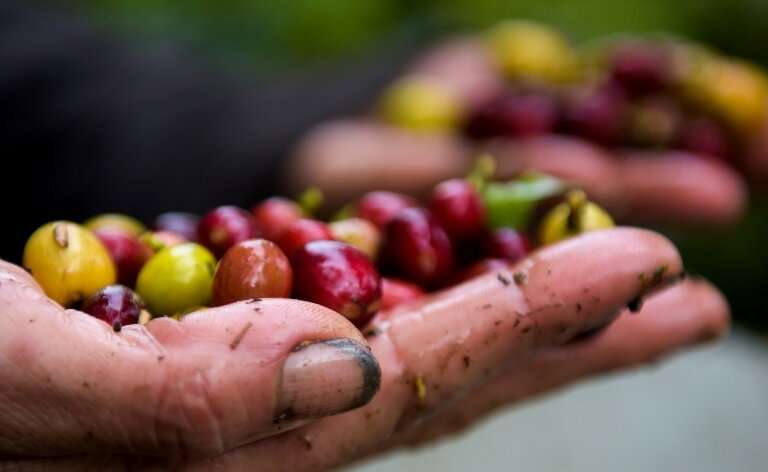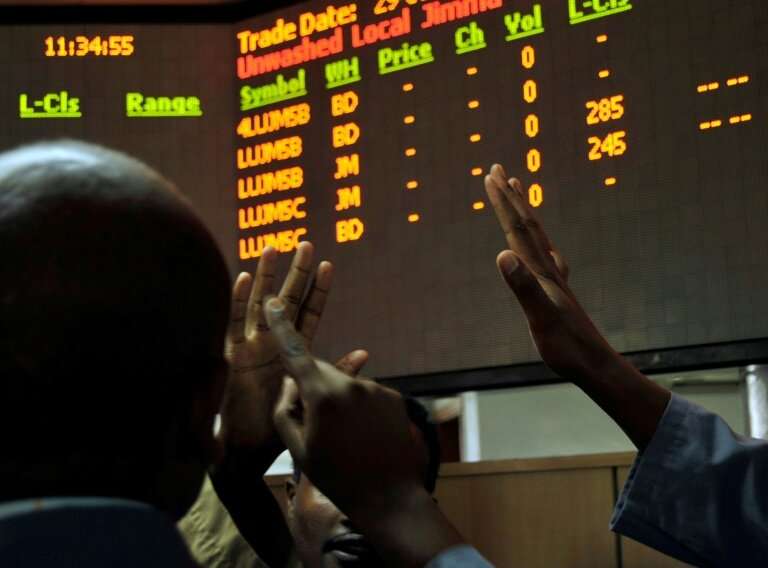60 percent of coffee varieties face 'extinction risk'

Three in five species of wild coffee are at risk of extinction as a deadly mix of climate change, disease and deforestation puts the future of the world's favourite beverage in jeopardy, new research warned Wednesday.
More than two billion cups of coffee are consumed every day, but the multi-billion-dollar industry is reliant on wild varieties grown in just a few regions to maintain commercial crop variety and adapt to changing threats posed by pests.
Scientists at Britain's Kew Royal Botanic Gardens used the latest computer modelling techniques and on-the-ground research to predict how the 124 coffee varieties listed as endangered might fare as the planet continues to warm and ecosystems are decimated.
Some 75 coffee species were assessed as being threatened with extinction: 13 classed as critically endangered, 40 as endangered, including coffea arabica, and 22 as vulnerable.
"Overall, the fact that the extinction risk across all coffee species was so high—nearly 60 percent—that's way above normal extinction risk figures for plants," Aaron Davis, head of coffee research at Kew, told AFP.
"It's up there with the most endangered plant groups. In another way, it's hardly surprising because a lot of species are hard to find, grow in restricted areas... some have a population only the size of a football pitch."
Global coffee production currently relies on just two species: arabica and robusta.
Arabica, prized for its acidity and flavour, accounts for roughly 60 percent of all coffee sold worldwide. It exists in the wild in just two countries: Ethiopia and South Sudan.

The team at Kew accessed climate data recorded in Ethiopia going back more than 40 years to measure how quickly the coffee's natural habitat was being eroded by deforestation and rising temperatures.
They found that nearly a third of all wild Arabica species were grown outside conservation areas.
"You've also got the fact that a lot of those protected areas are still under threat from deforestation and encroachment, so it doesn't mean they are secure," said Davis, lead author of the research published in the journal Science Advances.
'Fair price'
As well as the inconvenience—not to mention sleepiness—consumers would face from a coffee shortfall, the authors expressed concern over the livelihoods of farmers, many of whom are being forced to relocate as climate change ravages their crops.
"Ethiopia is the home of Arabica coffee," said Tadesse Woldermariam Gole, senior researcher for environment, climate change and coffee at the Forest Forum.
"Given the importance of Arabica coffee to Ethiopia, and the world, we need to do our utmost to understand the risks facing its survival."
Davis said wholesalers needed to ensure producers were paid a fair price so they could future-proof production by investing in better growing practices and conserving a varied stock.

In addition, governments must preserve and regenerate forests to help both wild and farmed coffee grow more easily, said the team behind the research.
Davis was keen to point out however that there is no current shortage of one of the world's most valuable commodities.
"As a coffee drinker you don't need to worry in the short term," he said.
"What we are saying is that in the long term if we don't act now to preserve those key resources we don't have a very bright future for coffee farming."
The new study found the enigmatic coffea stenophylla, known as the highland coffee of Sierra Leone, which is said to surpass arabica in flavour.
It had not been seen in the wild since 1954, and has all but vanished from coffee plantations and botanic gardens.
But a December 2018 expedition to the last known locality found a single plant followed by others after several hours of trekking.
More information: A.P. Davis el al., "High extinction risk for wild coffee species and implications for coffee sector sustainability," Science Advances (2018). DOI: 10.1126/sciadv.aav3473 , advances.sciencemag.org/content/5/1/eaav3473
Journal information: Science Advances
© 2019 AFP



















